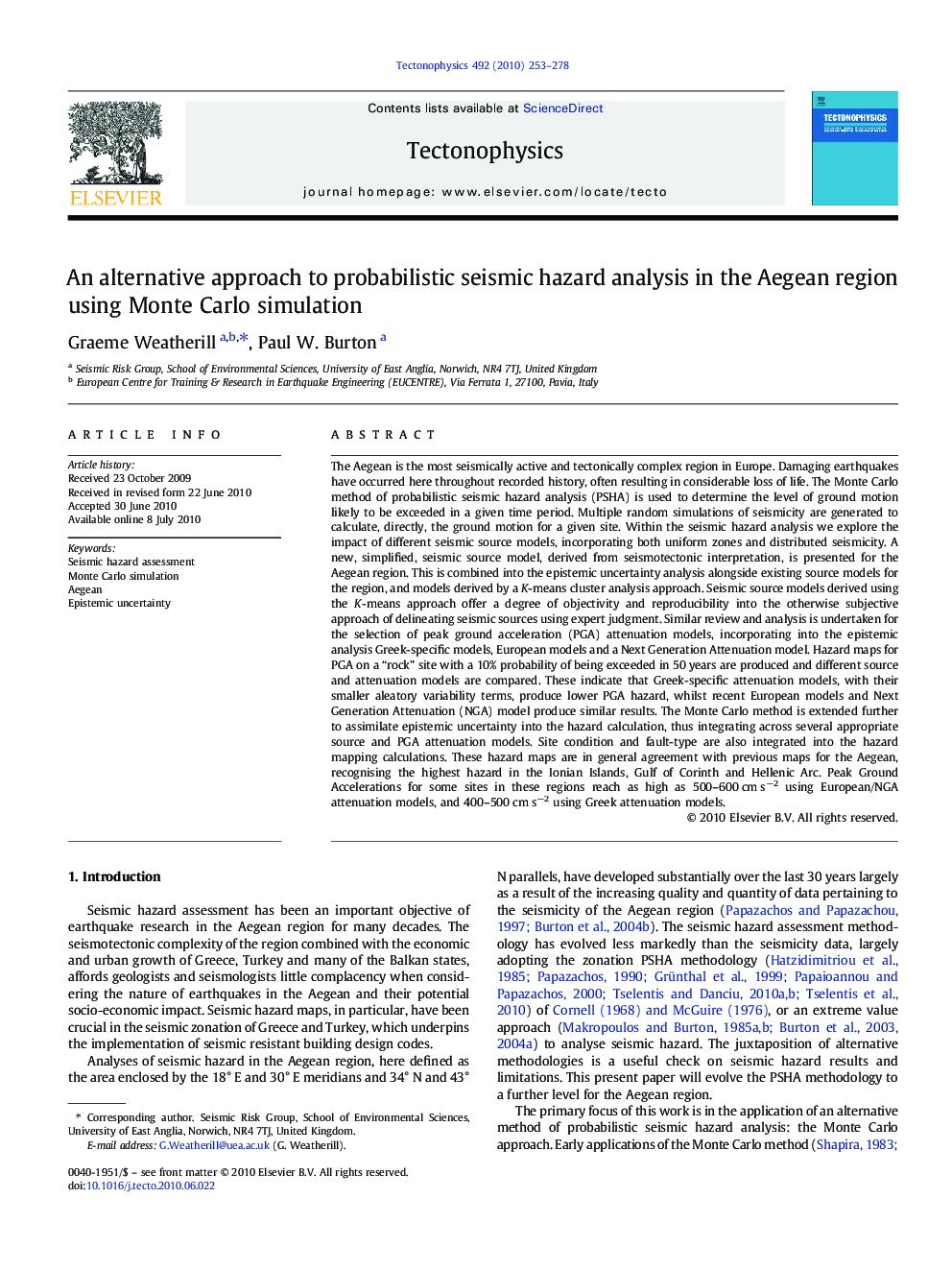| کد مقاله | کد نشریه | سال انتشار | مقاله انگلیسی | نسخه تمام متن |
|---|---|---|---|---|
| 4693325 | 1636862 | 2010 | 26 صفحه PDF | دانلود رایگان |

The Aegean is the most seismically active and tectonically complex region in Europe. Damaging earthquakes have occurred here throughout recorded history, often resulting in considerable loss of life. The Monte Carlo method of probabilistic seismic hazard analysis (PSHA) is used to determine the level of ground motion likely to be exceeded in a given time period. Multiple random simulations of seismicity are generated to calculate, directly, the ground motion for a given site. Within the seismic hazard analysis we explore the impact of different seismic source models, incorporating both uniform zones and distributed seismicity. A new, simplified, seismic source model, derived from seismotectonic interpretation, is presented for the Aegean region. This is combined into the epistemic uncertainty analysis alongside existing source models for the region, and models derived by a K-means cluster analysis approach. Seismic source models derived using the K-means approach offer a degree of objectivity and reproducibility into the otherwise subjective approach of delineating seismic sources using expert judgment. Similar review and analysis is undertaken for the selection of peak ground acceleration (PGA) attenuation models, incorporating into the epistemic analysis Greek-specific models, European models and a Next Generation Attenuation model. Hazard maps for PGA on a “rock” site with a 10% probability of being exceeded in 50 years are produced and different source and attenuation models are compared. These indicate that Greek-specific attenuation models, with their smaller aleatory variability terms, produce lower PGA hazard, whilst recent European models and Next Generation Attenuation (NGA) model produce similar results. The Monte Carlo method is extended further to assimilate epistemic uncertainty into the hazard calculation, thus integrating across several appropriate source and PGA attenuation models. Site condition and fault-type are also integrated into the hazard mapping calculations. These hazard maps are in general agreement with previous maps for the Aegean, recognising the highest hazard in the Ionian Islands, Gulf of Corinth and Hellenic Arc. Peak Ground Accelerations for some sites in these regions reach as high as 500–600 cm s−2 using European/NGA attenuation models, and 400–500 cm s−2 using Greek attenuation models.
Research highlights
► Monte Carlo technique for probabilistic seismic hazard analysis in the Aegean
► New source model and initial application of K-means derived source models
► Sensitivity analysis of key parameters affecting seismic hazard output
► Characterisation of epistemic uncertainty via a Monte Carlo approach
► Integration of site and faulting characteristics into seismic hazard maps
Journal: Tectonophysics - Volume 492, Issues 1–4, 20 September 2010, Pages 253–278